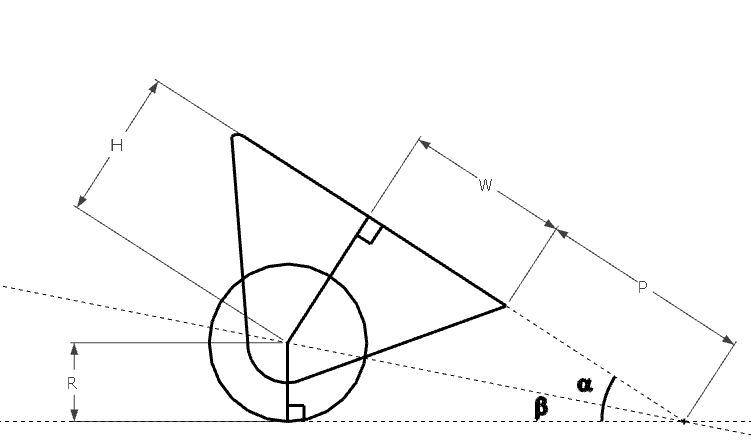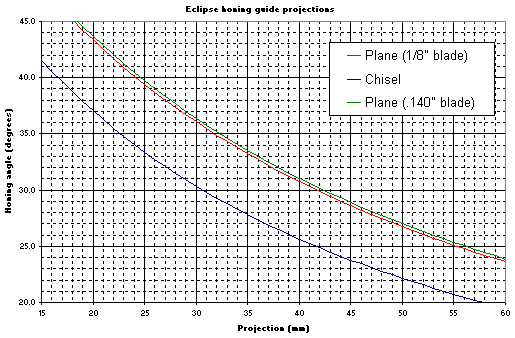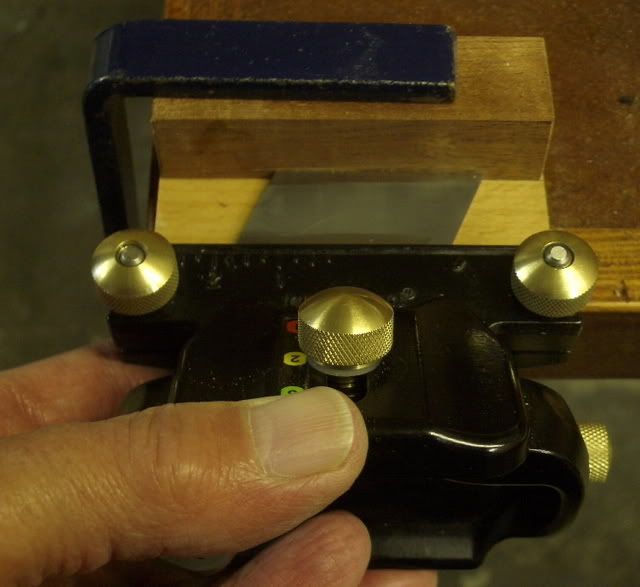woodbloke
Established Member
As an excuse to get out into a cold 'shop tonite here's how I do my projection board for the Eclipse gauge. This is the stuff I need:

Draw a line with the protractor at the desired angle onto the surface of the mdf, in this case 27deg:

Set the sliding bevel to exactly this angle and cramp firmly to the board:

Offer up the plane blade under the bevel and then locate the honing guide onto the blade and tighten:
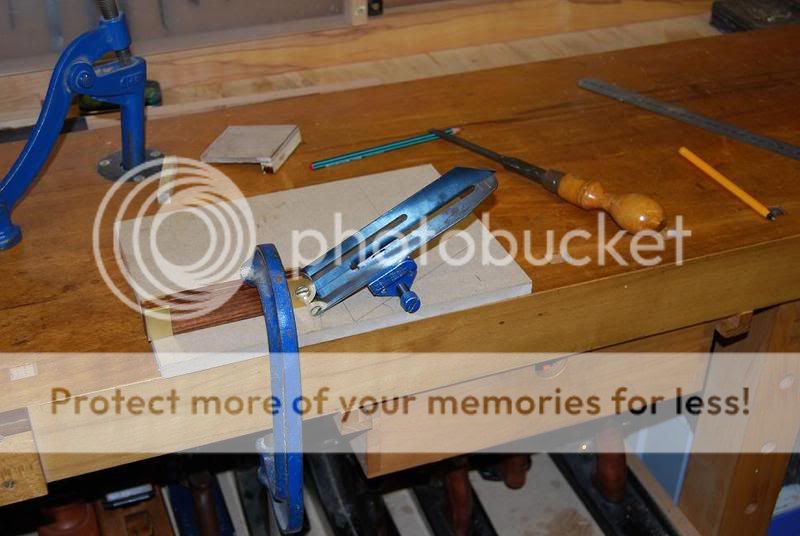
Cramp the blade and guide into one half of the new projection board:
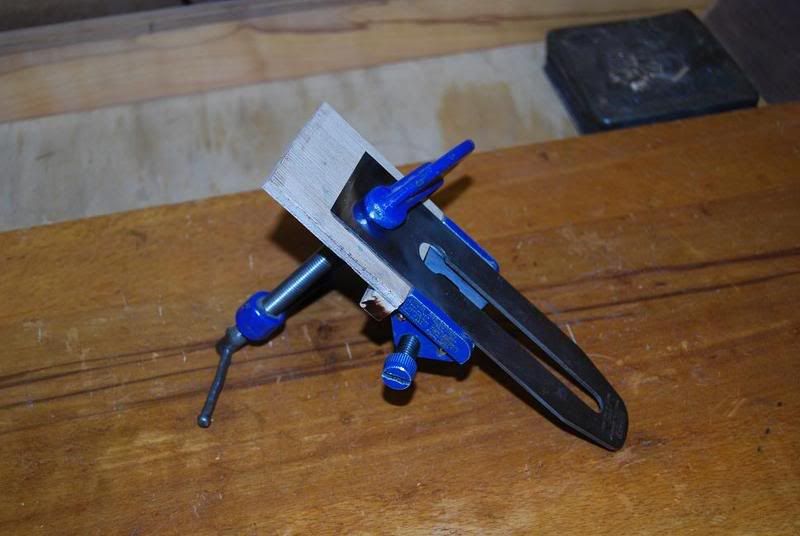
and then glue on the second bit so it makes contact with the edge of the plane blade:
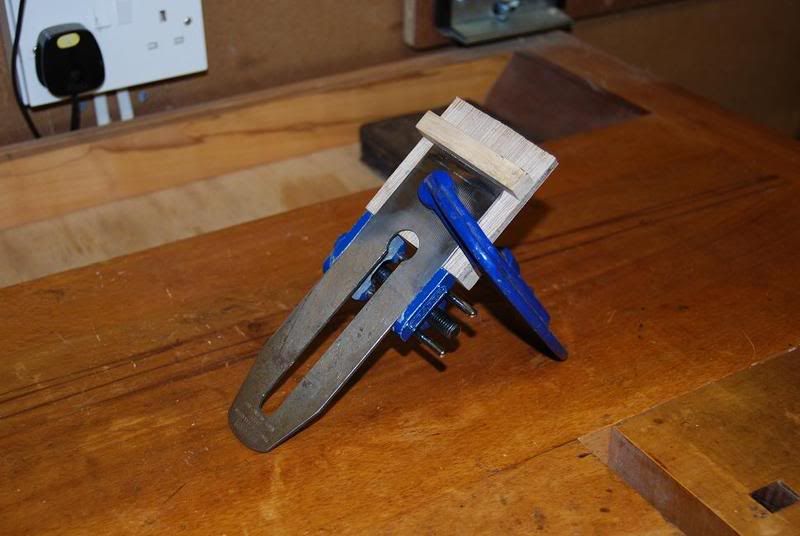
so that the finished job is thus:
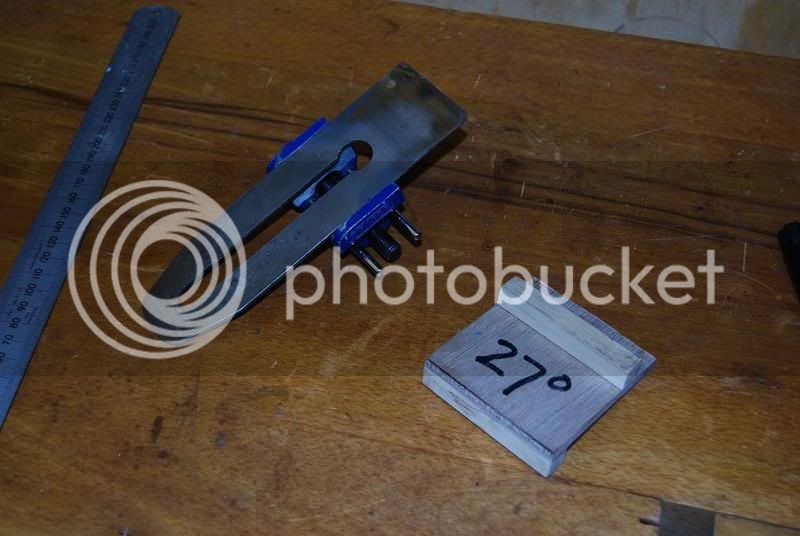
I used the hot glue gun as Gidon thought...13 minutes, but I had to take the pics with the D60...Paul :lol: - Rob

Draw a line with the protractor at the desired angle onto the surface of the mdf, in this case 27deg:

Set the sliding bevel to exactly this angle and cramp firmly to the board:

Offer up the plane blade under the bevel and then locate the honing guide onto the blade and tighten:

Cramp the blade and guide into one half of the new projection board:

and then glue on the second bit so it makes contact with the edge of the plane blade:

so that the finished job is thus:

I used the hot glue gun as Gidon thought...13 minutes, but I had to take the pics with the D60...Paul :lol: - Rob




